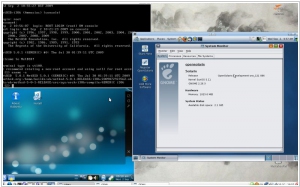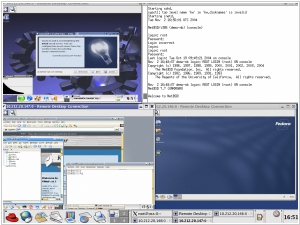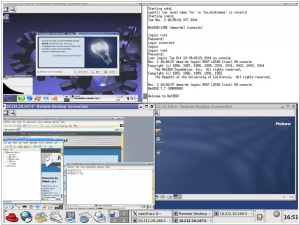KVM vs Xen
June 13, 2023 | Author: Michael Stromann
16

KVM (for Kernel-based Virtual Machine) is a full virtualization solution for Linux on x86 hardware containing virtualization extensions (Intel VT or AMD-V). It consists of a loadable kernel module, kvm.ko, that provides the core virtualization infrastructure and a processor specific module, kvm-intel.ko or kvm-amd.ko. KVM also requires a modified QEMU although work is underway to get the required changes upstream.
KVM (Kernel-based Virtual Machine) and Xen are both open-source virtualization platforms, but they have distinct differences in their architecture and capabilities. KVM is a virtualization solution that is tightly integrated with the Linux kernel. It leverages hardware virtualization extensions to provide efficient and high-performance virtual machines (VMs) on Linux systems. KVM supports a wide range of guest operating systems and benefits from the robustness and maturity of the Linux ecosystem.
Xen, on the other hand, is a hypervisor-based virtualization platform that runs directly on the hardware. It provides a thin layer of software between the physical hardware and guest VMs, enabling high isolation and performance. Xen supports various operating systems, including Linux, Windows, and BSD, and offers advanced features like paravirtualization and live migration.
See also: Top 10 Virtualization platforms
Xen, on the other hand, is a hypervisor-based virtualization platform that runs directly on the hardware. It provides a thin layer of software between the physical hardware and guest VMs, enabling high isolation and performance. Xen supports various operating systems, including Linux, Windows, and BSD, and offers advanced features like paravirtualization and live migration.
See also: Top 10 Virtualization platforms
KVM vs Xen in our news:
2007. Citrix to buy virtualization company XenSource

Citrix, a leading provider of thin client software for delivering business applications from servers to desktop computers, has recently completed the acquisition of XenSource, an open-source virtualization company, for approximately $500 million. This strategic move enables Citrix to expand its presence into the server and desktop virtualization market. XenSource offers a powerful open-source "hypervisor" software called Xen, which enables a single computer to simultaneously run multiple operating systems. This technology is particularly beneficial for replacing traditional servers with a more efficient, consolidated computing solution. XenSource's commercial offering, XenEnterprise, is built upon the Xen software platform. Virtualization has emerged as a highly sought-after technology in the IT industry as it empowers corporate customers to optimize their computing resources by consolidating numerous computing tasks onto fewer physical machines. Notably, VMware, the current market leader in virtualization, recently went public, experiencing a significant surge in its stock price, rising from $29 (its offering price) to $51.




